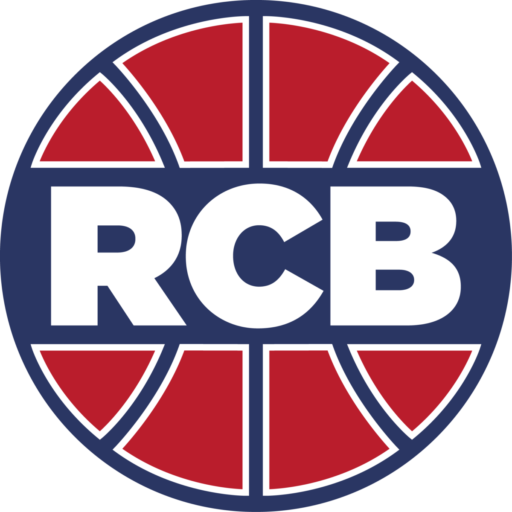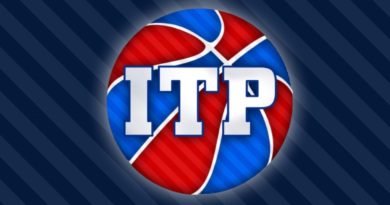Carlton Bragg: The Future at the Four
The freshman forward from Cleveland impressed throughout his limited minutes during the 2015-16 season. Now, with the departure of front court stalwart Perry Ellis, in addition to the likely departure of fellow classmate Cheick Diallo, Kansas’ frontcourt has some holes to fill. Luckily, Carlton Bragg recently announced his intent to return to Lawrence for his sophomore season, helping answer at least one question in regards to Bill Self’s 2016-17 frontcourt rotation.
So, just how good was Carlton Bragg last season? If you look at Bragg’s per-game numbers, he may appear, to the casual basketball observer, as an afterthought in an otherwise loaded Jayhawk rotation. However, if one digs a little bit deeper to Bragg’s numbers per 40 minutes, it becomes clear just how much the freshman produced when given the opportunity.
Bragg, per 40 minutes, averaged 17 points (fifth on the team) and 11.1 rebounds (fourth) while shooting a robust 56% from the field. Where he struggled most, and what likely played a part in his diminished role, was his inability to stay out of foul trouble. Per 40 minutes, Carlton Bragg committed just over seven fouls, the third most amongst Jayhawks.
Recently, Bragg postponed his NBA dreams in order to develop further in a Kansas uniform. Bragg possesses a freakish, NBA-type skill set within his 6’9″, 220 pound structure, showing the ability to shoot the ball from all spots on the floor, as well as the ability to attack the rim and finish at an efficient rate. Bragg’s size and skill set likens well to various former Kansas stars such as Marcus Morris, Darrell Arthur, and Perry Ellis; all of whom landed on the All Big-12 first team during their Kansas careers.
Per-40 minute statlines, freshman seasons:
Carlton Bragg, 2015-16: 17.0 points, 11.1 rebounds, 2.0 assists, 56% FG, 7.2 fouls
Perry Ellis, 2012-13: 17.2 points, 11.5 rebounds, 1.7 assists, 48% FG, 3.7 fouls
With Landen Lucas entrenched as the team’s starting center, it is likely that Bragg will be utilized in more of a stretch-4 type of role, where his ability to step out and knock down open jumpers will be maximized. The spacing provided by this ability of Bragg’s should increase opportunities in the lane for the talented backcourt of Frank Mason, Devonte’ Graham, Sviatoslav Mykhailiuk, and of course, newcomer Josh Jackson. Bragg should also thrive as the high post figure in Bill Self’s high-low sets, where he proved to be an effective passer in that role.
Expectations appear to be sky-high for Carlton Bragg as he enters his sophomore season, and likely for good reason. The incoming sophomore figures to be entrenched in Perry Ellis’ vacant starter’s role from day one. Fans should still expect growing pains with Bragg, as making the leap from limited role player to starter requires a bit of a transition period. However, if Bragg can reduce his foul rate on the defensive end and allows himself to stay on the floor, his offensive skill will flourish. Losing a player the caliber of Perry Ellis is never an easy thing for a program to endure, but having a player the caliber of Carlton Bragg waiting to replace him makes the loss of Ellis sting just a little bit less.





Pingback: Carlton Bragg: The Future at the Four | Big 12 Blog Network
cheap buy cialis – overnight delivery cialis cialis medication price
otc female viagra pill – sildenafil 100mg uk prescription viagra australia
blue chew cialis – 5 cialis buy tadalafil cialis
ivermectin side effects – stromectol brand purchase ivermectin
best ed treatment – ed pills amazon erectile dysfunction meds
deltasone 20 mg cost – prednisone 50 order prednisone with mastercard debit
generic viagra online uk – order brand name viagra online generic sildenafil tablets
online tadalafil canada – Best way to take cialis generic tadalafil in usa
ivermectin side effects – ivermectin australia stromectol for head lice
sexual dysfunction – natural pills for ed ed pills
order Albuterol – ventolin cost canada ventolin for sale
cytotec online usa – cytotec for sale online buying cytotec online
buy doxycycline online – doxycycline usa doxycycline cost in india
how to get neurontin – neurontin prescription coupon synthroid price without insurance
price generic sildenafil – best viagra coupon
best australian online pharmacy – brand cialis cialis 5mg for daily use
buy vardenafil online prescription – vardenafil professional online buy vardenafil new york
ivermectin for covid – stromectol cream buy stromectol 2mg
cost of prednisone in canada – prednisone online sale prednisone 20mg nz
best accutane cream – buy accutane online no prescription accutane 5 mg
walmart amoxicillin price – amoxicillin 500 mg buy amoxicilina 500 mg online
methylprednisolone from canadian pharmacy – medrol 2mg price buy lyrica 150 mg
buy custom research papers – write my essay 4 me help with essay writing
generic ivermectin for humans Carlton Bragg: The Future at the Four – Rock Chalk Blog http://ivermectin1.com/ ivermectina dosis
where can you get viagra – Buy branded viagra viagra online prescription uk
buy cialis canadian pharmacy – Approved cialis tadalafil pills price
Stromectol
stromectol tablets for humans – ivermectin for humans for sale ivermectin generic name
prednisone 50 mg tablet – prednisone prescriptions prednisone prescription drug
furosemide nz – furosemide 10 mg tablet can i buy furosemide without a prescription
ventolin for sale – ventolin 90 mcg ventolin uk price
can i buy cytotec over the counter in south africa – cost of cytotec how to buy cytotec
doxycycline online paypal – doxycycline 100mg coupon prednisolone 25mg price
Tadalis Sx Soft Research
stromectol pill – ivermectpill stromectola online
ivermectin price canada – purchase ivermectin ivermectin 12 mg
order sildenafil – cheap sildenafil online buying sildenafil online
buy tadalafil online overnight shipping – tadalafills tadalafil cheap tadalafil
isotretinoin online – roaccutane accutane buy india
http://ivrmectin.com – ivermectin human dosage
write essays online – help writing essays writing dissertation service
ivermectin price – ivermectin medication stromectol 3mg
viagra buy online canada – buy viagra from canada purchase cialis
health risks of water fasting http://cialis20walmart.com – best place buy cialis
allegra – http://allergyd.com
generic vardenafil mexico – levitra generic walgreens ed pills
mail order vardenafil online – cheap vardenafil treatments for ed
http://stromectolforte.com/# stromectol 3 mg tablets price
plaquenil medicine – dr simone gold hydroxychloroquine prednisone 5mg coupon
Prednisone
vidalista 40mg – cenforcep vidalista 60mg
xenical 2017 – xenical fda orlistat 60 mg price
stromectol tablets uk – ivermectin generic name ivermectin 500mg
best price for sildenafil – sildenafil citrate 50mg cheap viagra online in usa
how to get cialis in canada – cialis 20mg mail order cialis tablet price
prednisone 20mg tablets where to buy – deltasone 50 mg cost prednisone 10 mg prices
cialis canada for sale – cialis non prescription generic cialis sale
stromectol for humans – ivermectin for people buy stromectol pills
blood pressure diastolic http://ivermecton.com – do i need a prescription for ivermectin
ivermectin generic name – ivermectin pills for humans buy ivermectin online
mixing cialis and levitra http://levitraoff.com one viagra cialis levitra
viagra prescription singapore – canada viagra how to get real viagra
lowest price for generic viagra – realsilpll best generic viagra prices
price for cialis – cialis best tadalafil tablets in india
tadalafil 20mg cheap – Sales cialis buy viagra cialis
ivermectin 12 mg stromectol – ivermectin over counter ivermectin 6mg without a doctor prescription
stromectol prices http://ivermecton.com/ where to buy ivermectin
ivermectin 200 – ivermectin lotion ivermectin 4000 mcg
online casino – online casino games real online casino
sildenafil prescription http://www.viagwdp.com/# can you take cialis in the morning and viagra at night women viagra
write my paper for me – cheap research papers for sale custom written papers
https://sildenafilhim.com reasons for erectile dysfunction at 55
sildenafil 100mg prescription – myviagrsite average cost of viagra in canada
buy oral stromectol – ivermectin 12 mg for humans ivermectin 12 mg
https://www.gabenhim.com – neurontin 600 mg capsule
ivermectin cost https://ivermectinhum.com/ ivermectin for humans for sale
rx pharmacy – canadian pharmacy oxycodone canadian compounding pharmacy
can you buy viagra online without a prescription http://viagwdp.com/ online real viagra female viagra nz
buy cialis online from india
prednisone 20 – buying prednisone on line 20mg daily prednisone
prednisone 5 mg – prednisone 10mg pills prednisone otc
https://www.lasixotc.com erectile dysfunction -life changes to help
accutane price nz – buy accutane online south africa accutane 20mg
buy amoxil 1000mg usa – amoxicillin for sale in usa without px buy amoxil 1000mg
ivermectin 6 – stromectol for people ivermectin 200mg
Can You Buy Viagra Online
Aaqpjtaa https://www.ivermect1n.com/ ivermectin liб»Ѓu viГЄn 3 mg
viagra precautions
https://www.stromektol.com stromectol uk ivermectin virus
stromectol order online – stromectol online ivermectin 6
chumba casino – best online casinos real money casino real money
ivermectin 3 mg tablet dosage – ivermectin tablet ivermectin cream 1%
https://www.pharmforte.com penile prosthesis erectile dysfunction
Stromectol
online pharmacy mexico – reliable canadian pharmacy reviews best canadian pharmacy online
If you wish for to increase your experience
simply keep visiting this web site and be updated with
the most up-to-date news posted here.
Here is my homepage: 먹튀검증
buy best erectile dysfunction pills – can you buy ed pills online cheapest ed pills online
http://albuterolair.com ventolin tablet salbutamol albuterol sulfate inhalation solution price
comprar cialis 20mg
how to get prednisone without a prescription – steroid prednisone prednisone rx coupon
viagra tarragona
buy prednisone india – buy prednisone without prescription buy prednisone
http://www.pharmforte.com cvs erectile dysfunction pills
where can i purchase accutane – accutane online buy accutane online usa
cialis online bestellen http://www.cialis20walmart.com
amoxil generic name – amoxicillin for sale buy amoxicilin noscript
betfair casino online – real casino best online casino usa
ivermectin tablets http://ivermectinol.com
Zgezzgz http://stramectol.com/ stromectol without prescription
ivermectin tablets for sale walmart – ivermectin virus buy ivermectin cream
compare tadalafil prices – Free viagra sample sildenafil 50mg price